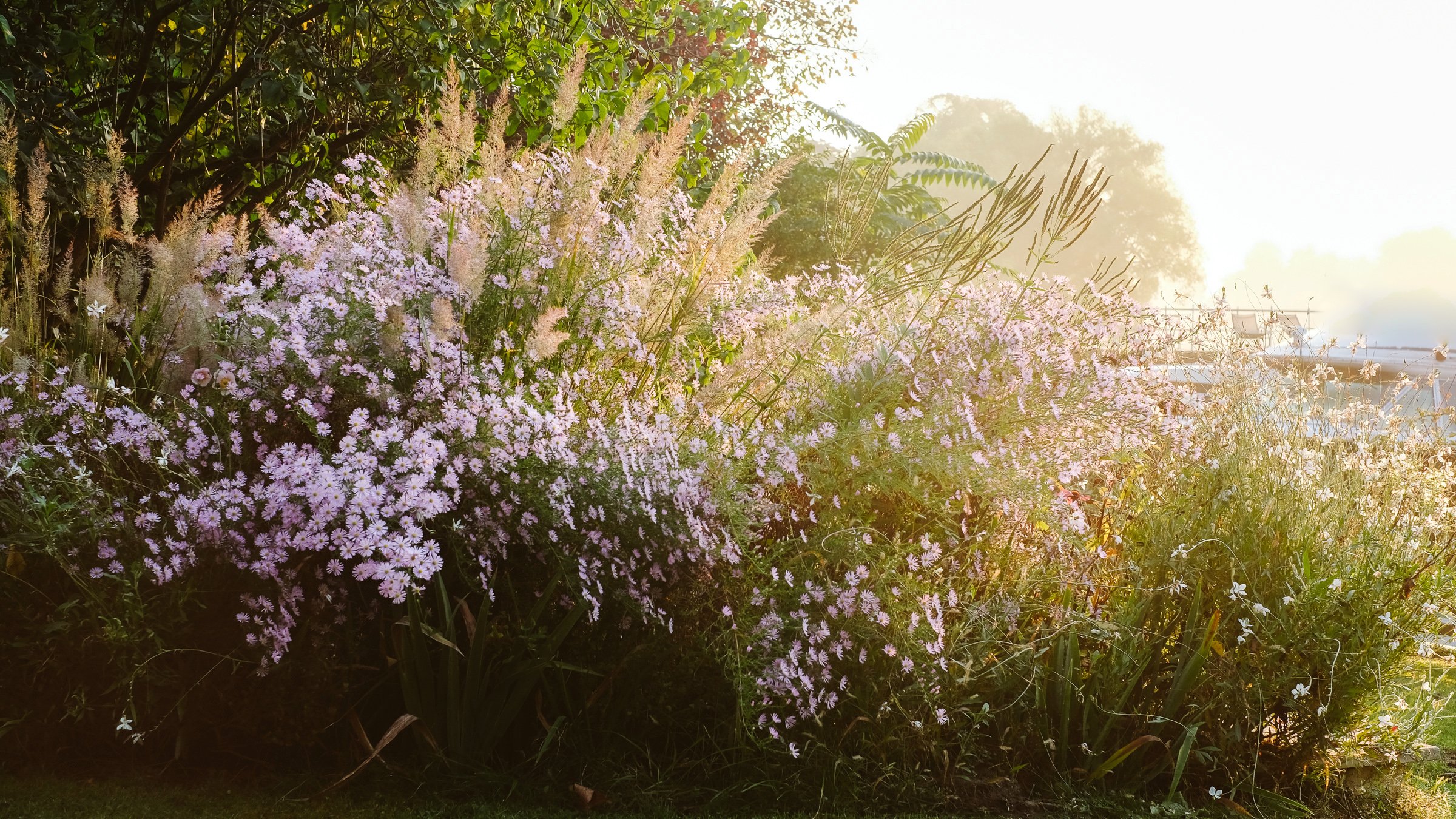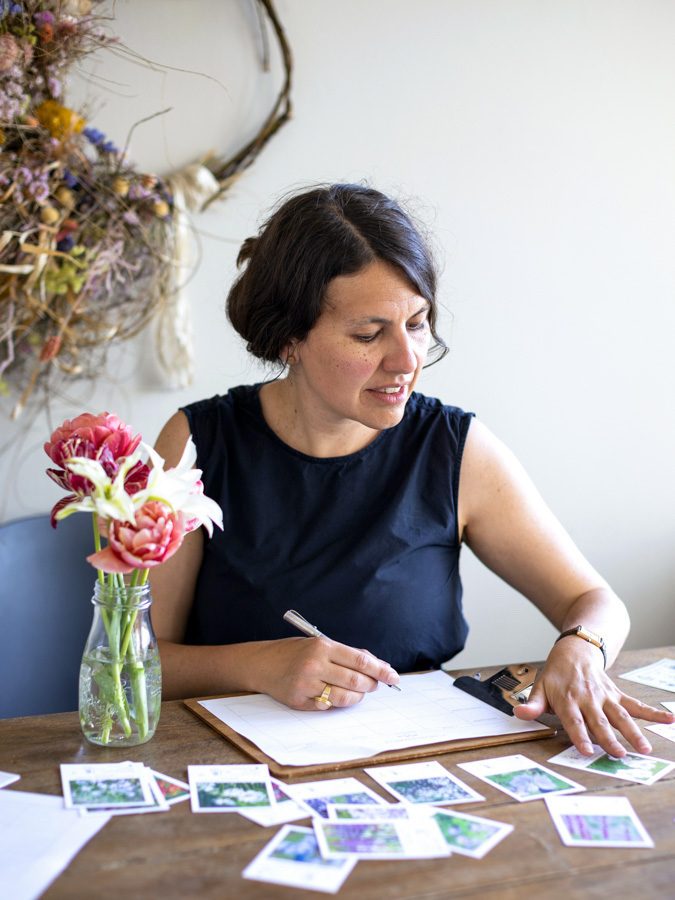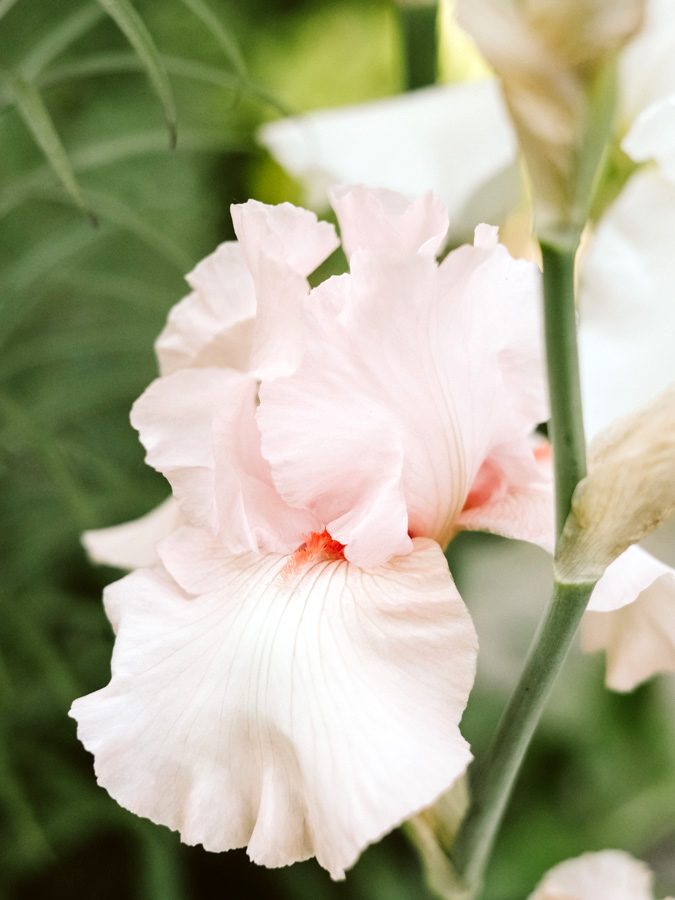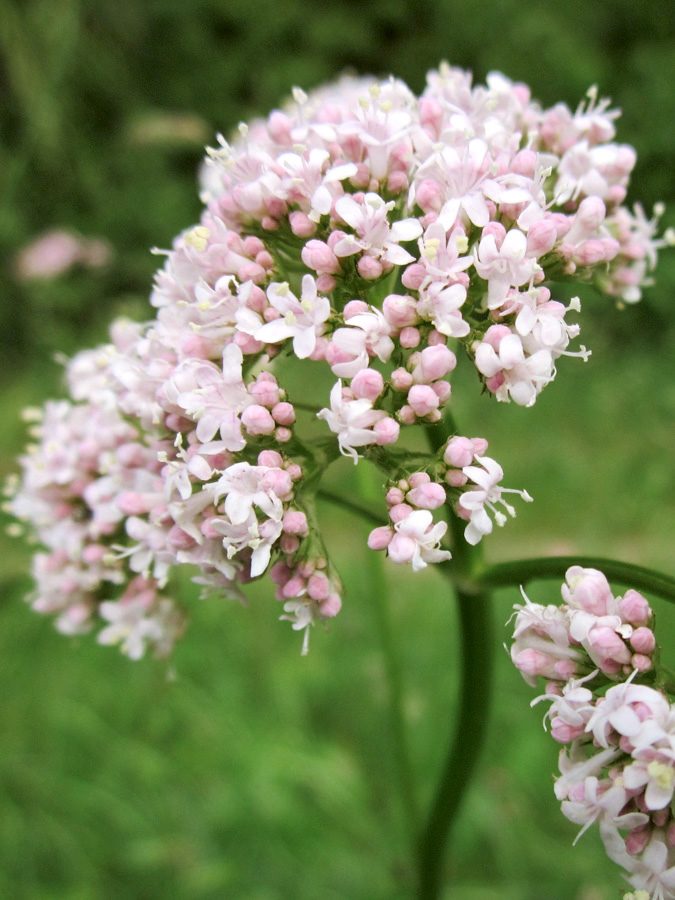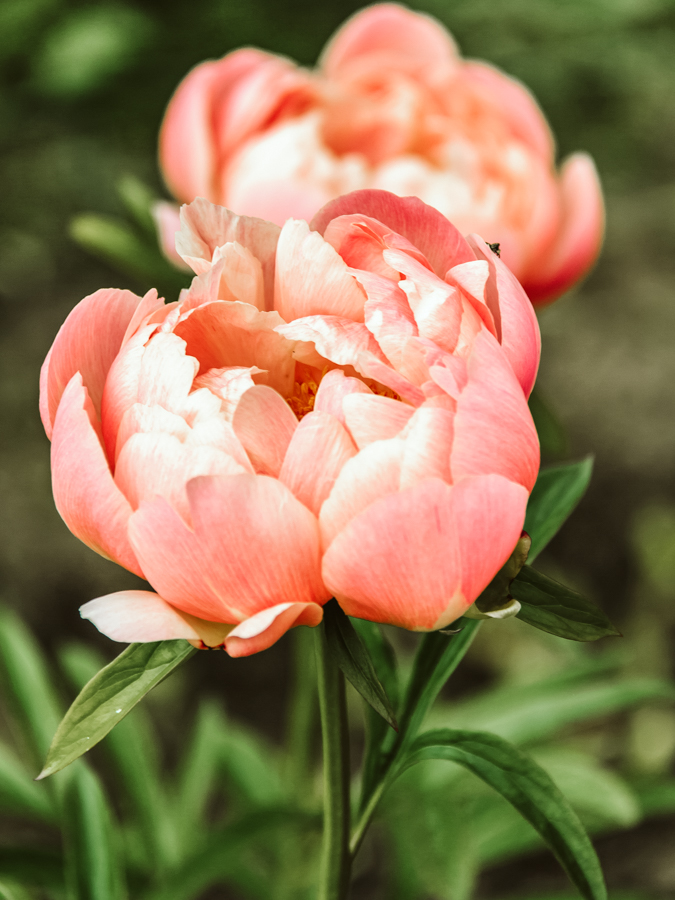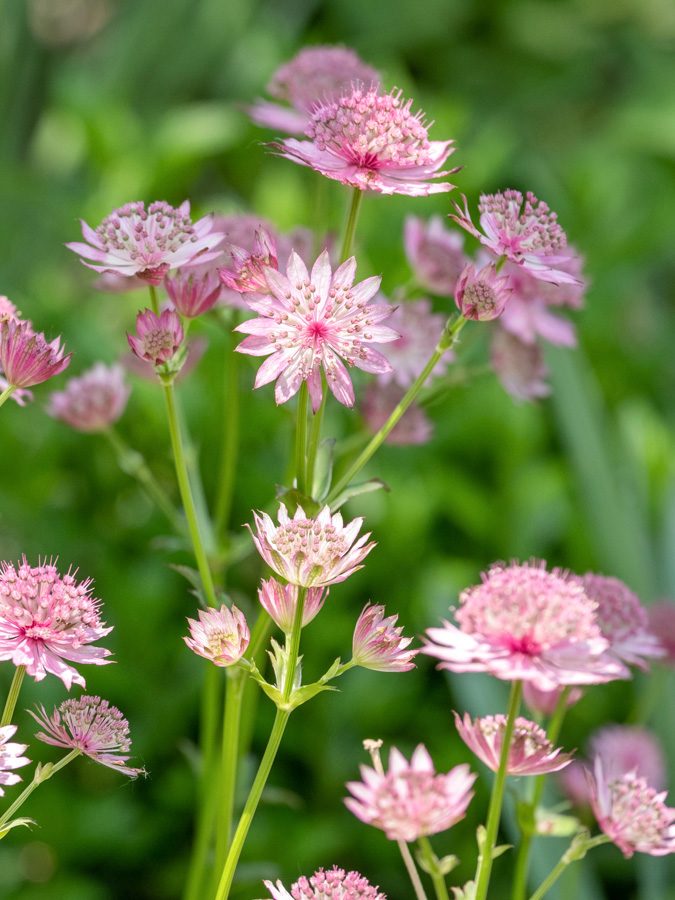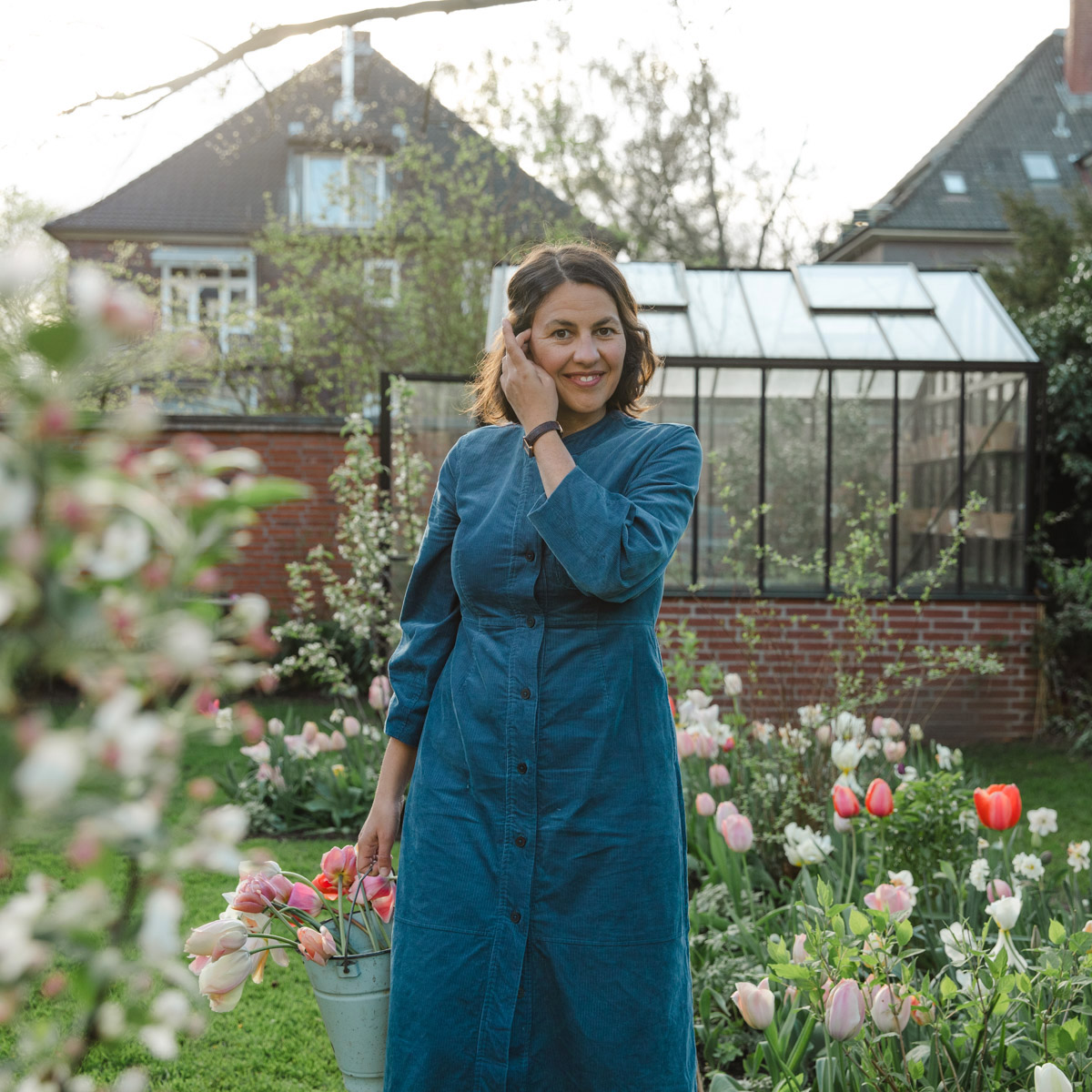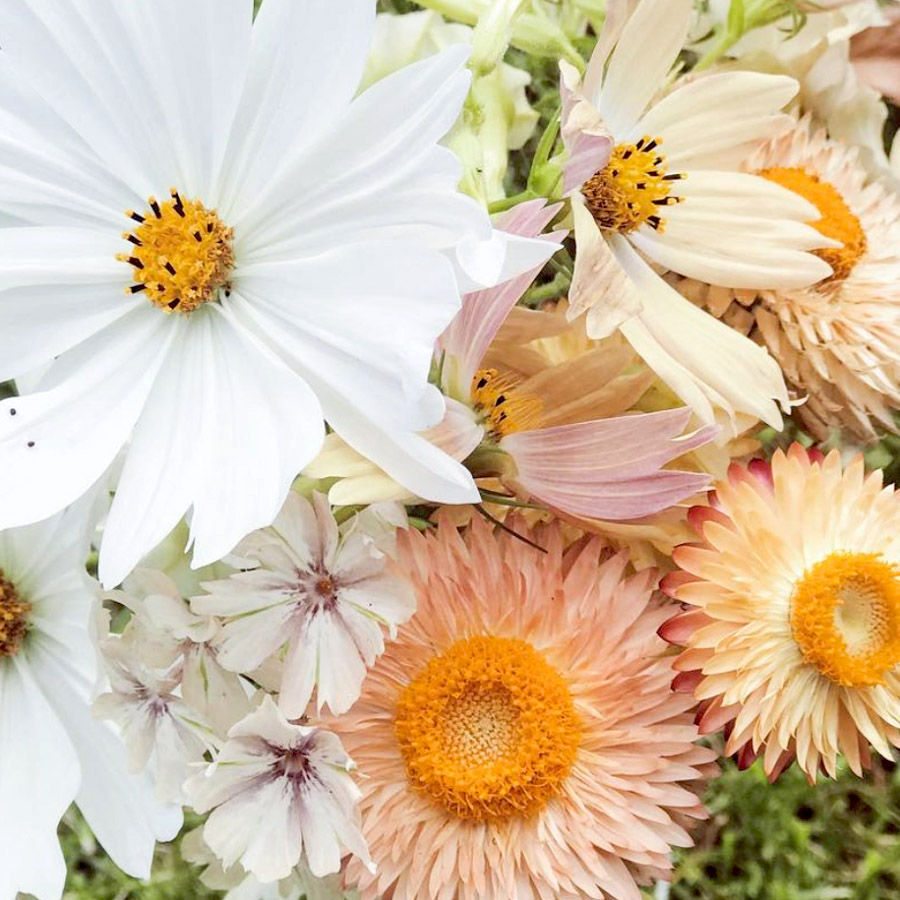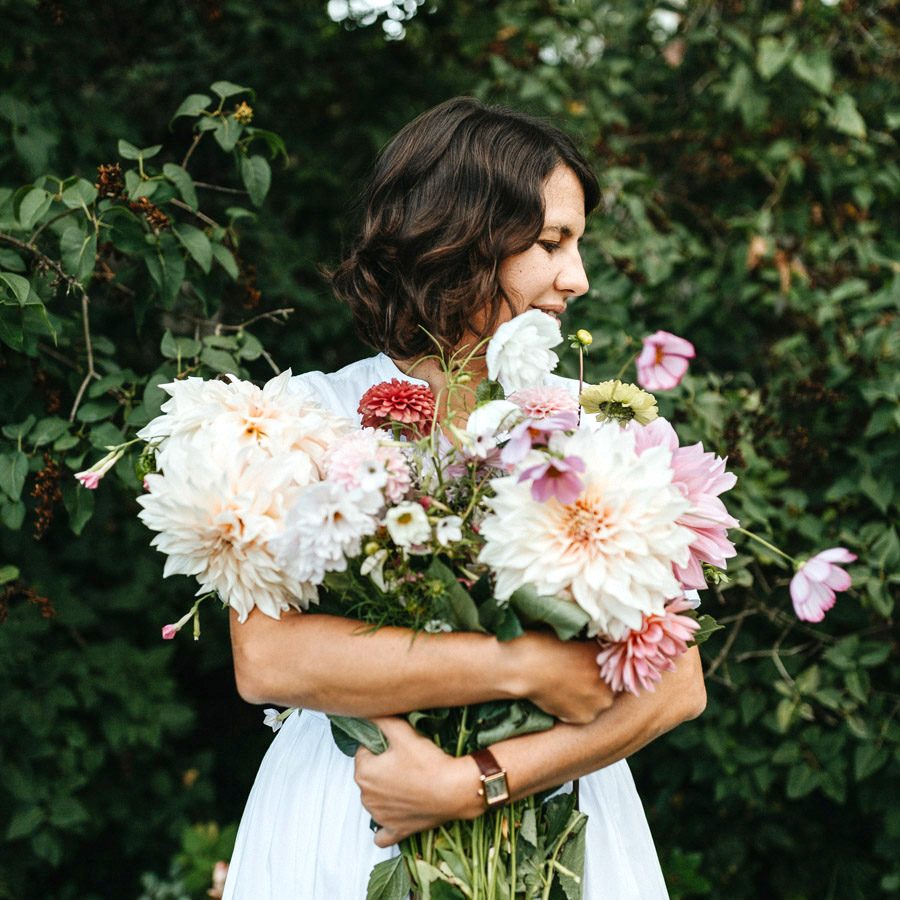Bed Planning – The Design of My Hamburg Garden Part II
A symphony in delicate pastel with a lot of rhythm and dynamics
When I visited our new garden for the first time, I immediately noticed that there are very ambiguous light conditions here. From bright midday sun to deepest shade, the whole range is present, and in addition there is a big difference between the seasons – typical for an urban garden! In winter, sometimes not a single ray of sunlight makes it in, as the sun is too low to shine over the roofs of the houses. In the summer, on the other hand, part of the garden sweats under the strongest midday sun. It quickly became clear: It will become a perennial garden. Of course, I also plant annuals and dahlias, but these require a really permanent sunny spot, which we only have on the terrace. Perennials are much better suited for the other garden areas with these strong light fluctuations.
Next, I planned the bed structures and divided them into two areas: Shade to Part Shade and Part Shade to Sun. To create a real harmony throughout the garden, I chose many penumbra perennials that can grow well in both areas and provide a kind of connector between the beds (autumn anemones, star umbels, night violets, wood phlox).
Basically, at the beginning I always think about a mixture of opulent plants (leading perennials, roses, dahlias, small woody plants or similar), and then come up with interesting combinations with light, wild perennial-like plants that contrast with them in an exciting way. I love tall bearded iris with meadow chervil, roses and valerian, dahlias and cosmeas, autumn anemones and hydrangeas.
Then the planning starts with moving my perennial cards back and forth (you can find them in the perennial kit here) until a coherent mix is created. To get an overview of whether there really is a flowering highlight in the bed in every season and also enough companion and filler perennials are planned, I check my perennial combination with a table against. By the way, you can also find this in the perennial kit, which is an incredibly helpful tool for both newbies and experienced gardeners to plan new beds again and again.
A next step is the correct calculation of the required quantities. Here, everyone can find their own way according to the type and character. Especially in the beginning it is worthwhile to meticulously draw a bed plan and accurately calculate the quantities. However, since I now have over 15 years of experience with perennials and little time, I proceed as follows: I add up the square feet and calculate times seven. The result is the approximate total amount of perennials needed. Most perennial varieties are placed in groups of three, five or singly. And each group is repeated several times in the bed. I usually have a sense of how many groups I can make for each variety. I write down the numbers and compare it to my required total and erase around until the two match.
In total, about 530 perennials were planted on 80 square meters in Hamburg.
Here you’ll find a complete planting list with quantities for all beds.
We first prepared the areas in November and filled them with good soil, then first the leading perennials (or roses) were distributed rhythmically, but at unequal intervals over the entire areas. Then we placed the groups of companion plants next to them, and finally I filled the still empty areas with the filler perennials. At the very end, I distributed individual bedding plants in gaps. Only when everything is in place is planting done!
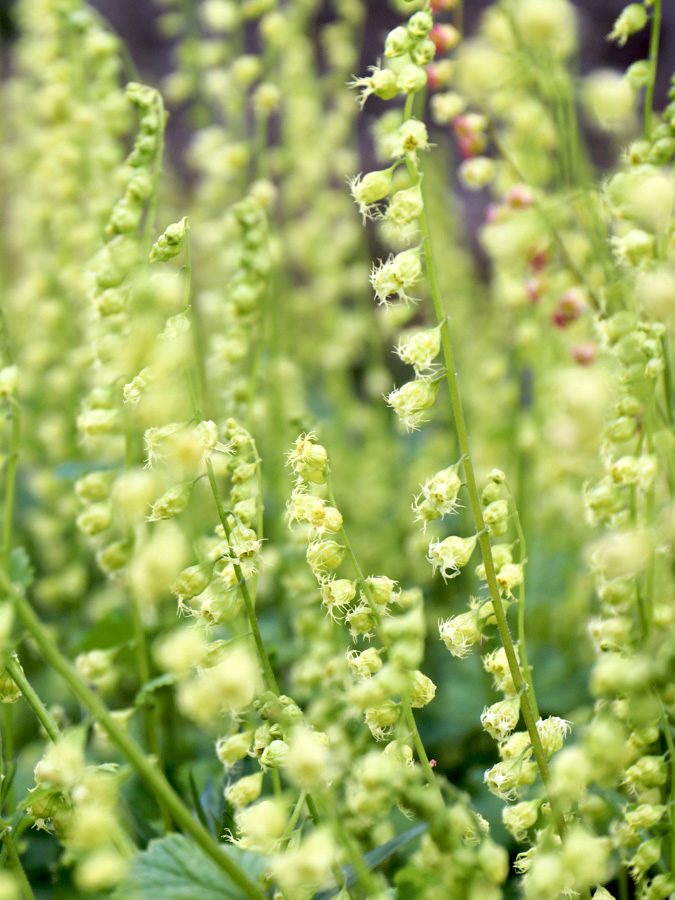
It is wonderful to then discover the next year that this irregular but rhythmic distribution gives a beautifully natural image, as soon as perennials of one variety begin to bloom simultaneously distributed throughout the garden. This rhythm, this repetition is the decisive criterion in any successful planting. Each group of a variety should be repeated at least 3 times in the bed. In this way, the whole garden becomes one large, cohesive work of art instead of a patchwork quilt.
Planning perennial beds is comparable to composing a symphony. There are themes that repeat, a whole orchestra that plays simultaneously, and individual instruments that make their grand entrance one after the other. But in the end it is this one music that remains in the ear and is much more than merely the sum of the individual parts. This is exactly how a perennial bed should be designed. Even in the smallest garden it is possible to make this grand gesture, this grand concert.
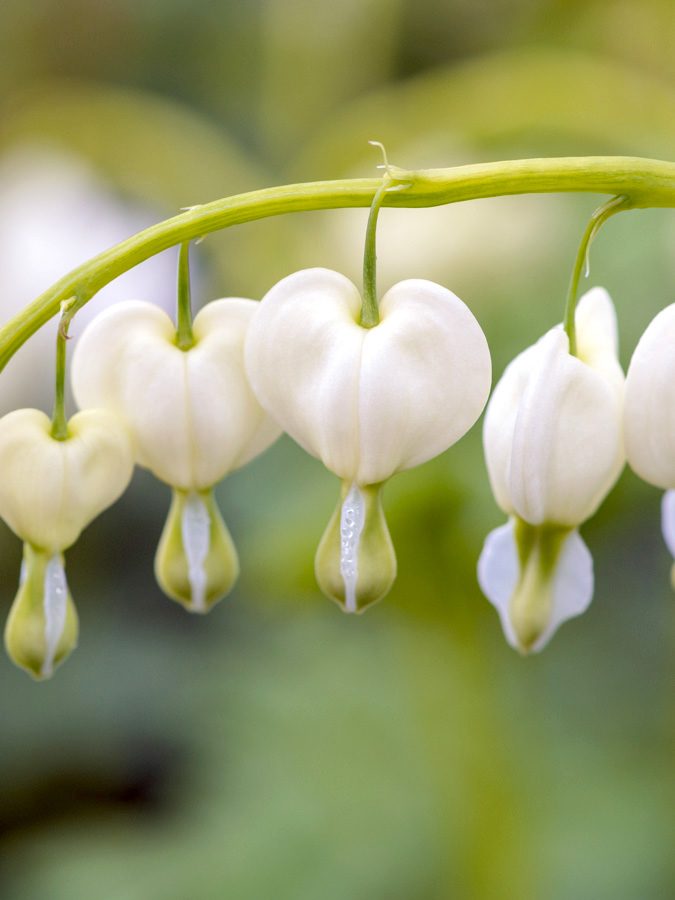
Of course, perennial beds may grow more plants than perennials alone: Over 800 bulbs were placed among the perennials for a beautiful spring bulb spectacle. But dahlias and annuals can also beautifully complement a perennial bed. Dahlias I would distribute in May individually, rhythmically in the bed. Annuals should already have grown at least 30 cm high, so that they do not fall victim to the weed cutter. Cosmeas and ornamental tobacco look great, but so can dill and bishop’s flower, wild roses, dahlias and irises. Golden poppies and summer phlox belong more in the foreground. And I like to plant 3-5 of the snapdragon candles together. I actually find enough gaps for these wonderful summer flowers every year in May and if necessary the bed is extended by 20 cm.
The perennials planted in November are now already huge, but I am so excited about the second and third year. Especially autumn anemones or star umbels grow to full size and abundance only then and of course the peonies also become more beautiful and flowery from year to year. My mother-in-law (a very old lady) told of one that her mother still planted and it is still blooming like crazy. Maybe my children will also take care of one or the other peony I planted last year later, it would be my pleasure!
Here you find more tipps for planning a perennial bed!
Here you find the perennial kit!


